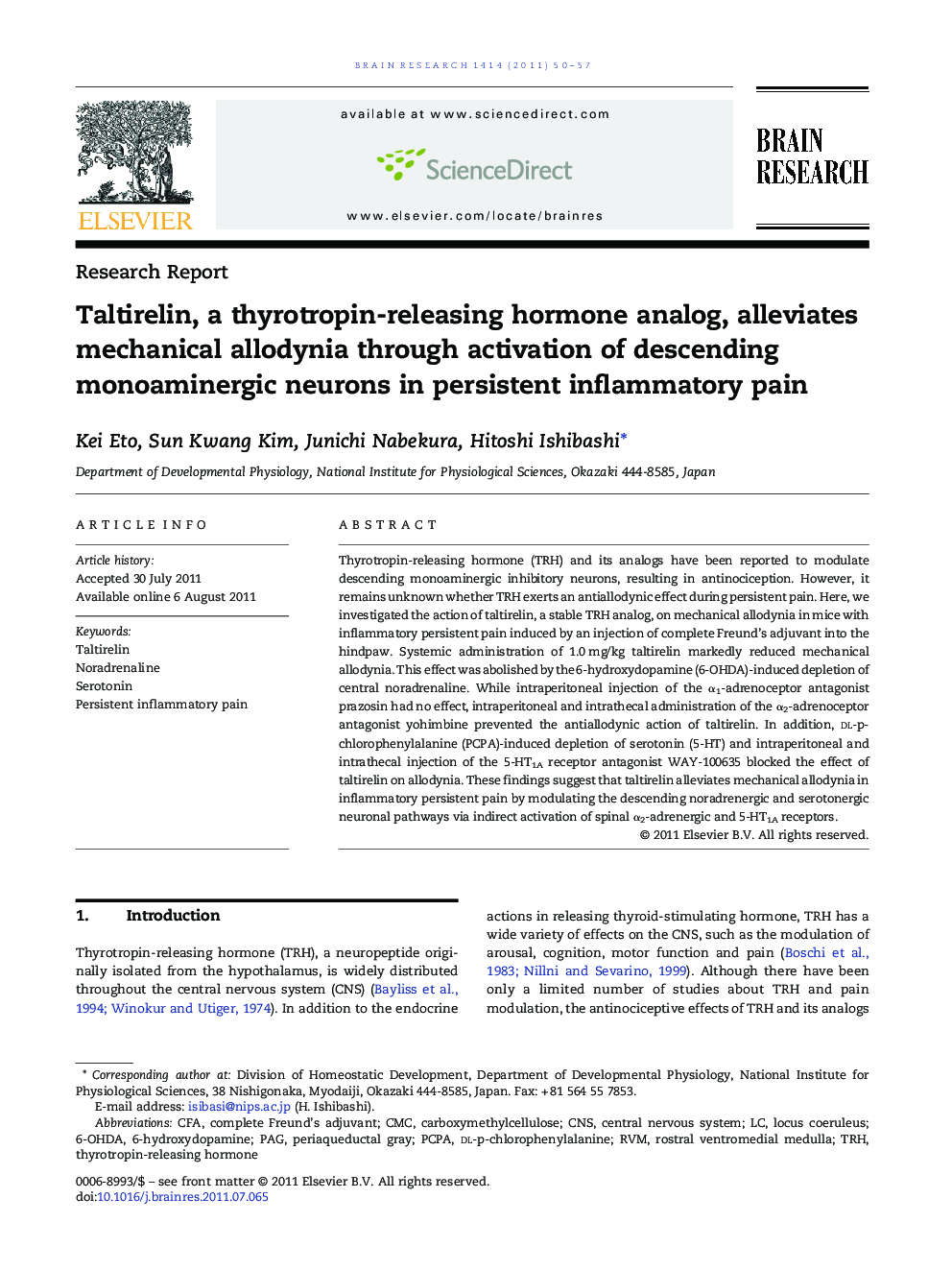| Article ID | Journal | Published Year | Pages | File Type |
|---|---|---|---|---|
| 4325649 | Brain Research | 2011 | 8 Pages |
Thyrotropin-releasing hormone (TRH) and its analogs have been reported to modulate descending monoaminergic inhibitory neurons, resulting in antinociception. However, it remains unknown whether TRH exerts an antiallodynic effect during persistent pain. Here, we investigated the action of taltirelin, a stable TRH analog, on mechanical allodynia in mice with inflammatory persistent pain induced by an injection of complete Freund's adjuvant into the hindpaw. Systemic administration of 1.0 mg/kg taltirelin markedly reduced mechanical allodynia. This effect was abolished by the 6-hydroxydopamine (6-OHDA)-induced depletion of central noradrenaline. While intraperitoneal injection of the α1-adrenoceptor antagonist prazosin had no effect, intraperitoneal and intrathecal administration of the α2-adrenoceptor antagonist yohimbine prevented the antiallodynic action of taltirelin. In addition, dl-p-chlorophenylalanine (PCPA)-induced depletion of serotonin (5-HT) and intraperitoneal and intrathecal injection of the 5-HT1A receptor antagonist WAY-100635 blocked the effect of taltirelin on allodynia. These findings suggest that taltirelin alleviates mechanical allodynia in inflammatory persistent pain by modulating the descending noradrenergic and serotonergic neuronal pathways via indirect activation of spinal α2-adrenergic and 5-HT1A receptors.
► Activation of TRH receptors by taltirelin inhibited mechanical allodynia. ► The taltirelin response was mediated by descending monoaminergic systems. ► alpha2-Adrenoceptors and 5-HT1A receptors were required for the taltirelin action. ► Depletion of noradrenaline or serotonin fully inhibited the taltirelin action. ► The results suggest the cooperativity of noradrenergic and serotonergic systems.
